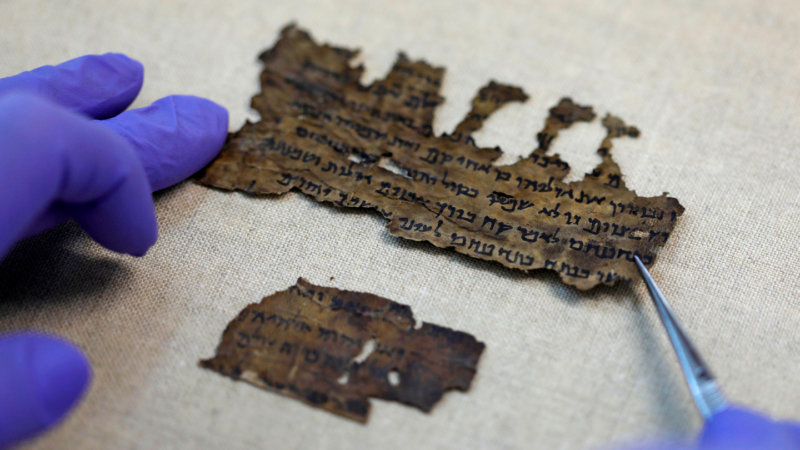Say you’re an archaeologist, and you’re studying an ancient skeleton, pair of pants or piece of poop. You want to know just how old that object is, so you can see where it fits into history. But how can you find out?
One common method is radiocarbon dating — or just carbon dating, for short. This technique can pinpoint the age of an organic material. That is, ones that contain carbon.
All living tissues contain carbon. Most of it is a variety, or isotope, called carbon-12. This stable form of carbon contains six neutrons in its nucleus. But a small portion of the carbon in living things is carbon-14. This form, which has eight neutrons in its nucleus, is unstable. It’s radioactive. That means it will gradually decay into an isotope of nitrogen.
See all the entries from our Let’s Learn About series
When an organism is alive, it continually takes in carbon from its environment. So a steady proportion of its carbon will be carbon-14. But after it dies, that carbon intake stops. The carbon-14 in its tissue gradually decays at a known rate. By measuring how much carbon-14 is left in an ancient sample, scientists can find out how long it’s been since that decay began — and therefore how old something is.
This works for human, animal and plant remains. It also works for stuff made out of plant or animal material. Think wooden arrow shafts, leather moccasins and plant fibers in woven fabrics or baskets.
Carbon dating a human skeleton helped identify one of the world’s oldest known shark attack victims, from 3,000 years ago. Carbon dating soil samples led to the discovery that tiny creatures called rotifers can live in suspended animation for some 24,000 years.
But carbon dating doesn’t work for all samples. Carbon-14 has a half-life of 5,730 years. That’s how long it takes half the carbon-14 in any given sample to decay and disappear. After about 50,000 years, so little carbon-14 remains in any sample that this element can’t be used to date the material. To date older objects, scientists have to use other radioactive elements with longer half-lives as timers.
Want to know more? We’ve got some stories to get you started:
Explainer: Radioactive dating helps solve mysteries Knowing the decay rate of carbon-14 and other radioactive isotopes can help date fossils and artifacts. (1/10/2023) Readability: 7.6
Skeletons point to world’s oldest known shark attacks These ancient victims had lived thousands of years ago and half a world apart (9/8/2021) Readability: 7.1
Tiny animals survive 24,000 years in suspended animation Radiocarbon dating of frozen soil was key to this discovery. (9/6/2021) Readability: 8.1
Instant Egghead quickly runs through how carbon dating works.
Explore more
Fossil-fuel use is confusing some carbon-dating measurements
Europe’s ancient humans often hooked up with Neandertals
Uplifting Antarctic shores point to accelerating loss of glaciers
Vikings were in North America 1,000 years ago
Traces from nuclear-weapons tests offer clues to whale sharks’ ages
This cave hosted the oldest known human remains in Europe
Iron Age grave in England points to a possible woman warrior
Radiometric dating puts pieces of the past in context. Here’s how (from Science News)
Activities
Archaeologists, paleontologists and other researchers use radioactive isotopes to date all kinds of samples — from mummies to dinosaur fossils. The technique might sound complicated, but it’s actually no more complex than a role of the dice! In this Science Buddies project, you can model radioactive isotope dating with a dice game.




